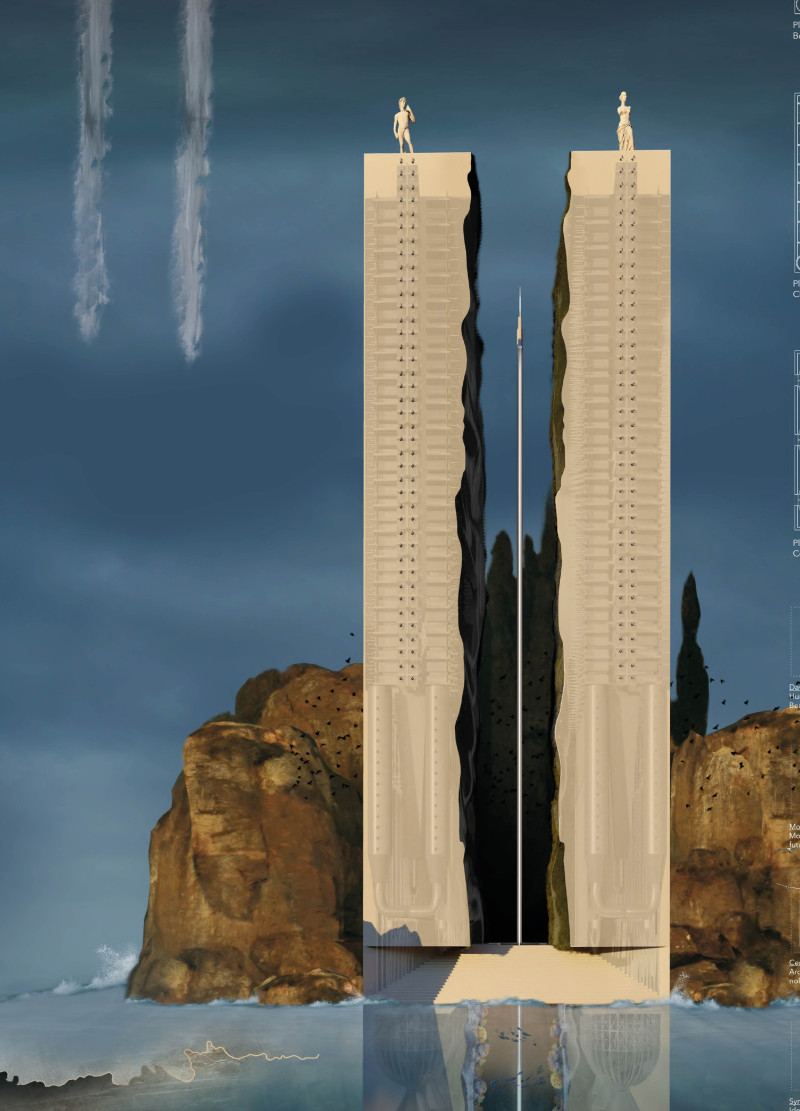5 key facts about this project
The Pavilion of Humanity, titled "Life Over Death," is an architectural design that integrates closely with the natural environment. It is located in a specific natural setting that enhances its purpose of fostering a stronger connection between human lives and the ecology around them. The structure serves to regenerate local fauna while inviting contemplation on the themes of life and death through its innovative design.
Design Concept
The project centers on the idea of duality, which is expressed in its form and structure. Figures like David and Venus symbolize the beauty of both man and woman, reflecting broader philosophical themes. The pavilion's design encourages visitors to engage with the landscape, promoting a sense of awareness and reflection. It combines a monumental presence with a feeling of lightness, allowing it to blend into the natural surroundings, rather than dominate them.
Materials and Sustainability
Human waste is primarily used to construct the vertical walls of the pavilion, emphasizing a commitment to sustainability. This choice highlights the importance of repurposing materials in design. By incorporating human particles along with saltwater, fire, wind, and earth, the structure promotes regeneration and creates an environment where new life can emerge. This approach connects architectural practice with ecological responsibility.
Functional Integration
Inside the pavilion, natural processes and mechanical systems work together. Renewable energy powers extraction engines and robotic arms that help maintain the ecological health of the structure. Central lighting is designed to support local fauna and encourages biodiversity. The placement of deceased bodies in equal squares, following inspirations from the Cimitero di San Cataldo, ties together themes of life and death with practical functionality in the design.
The pavilion emerges as a living entity, capable of nurturing connections with the surrounding environment. It offers a narrative that emphasizes life, death, and the intricate cycles of nature. By engaging visitors in thought-provoking ways, the design invites them to reflect on their relationship with the world around them.


















































